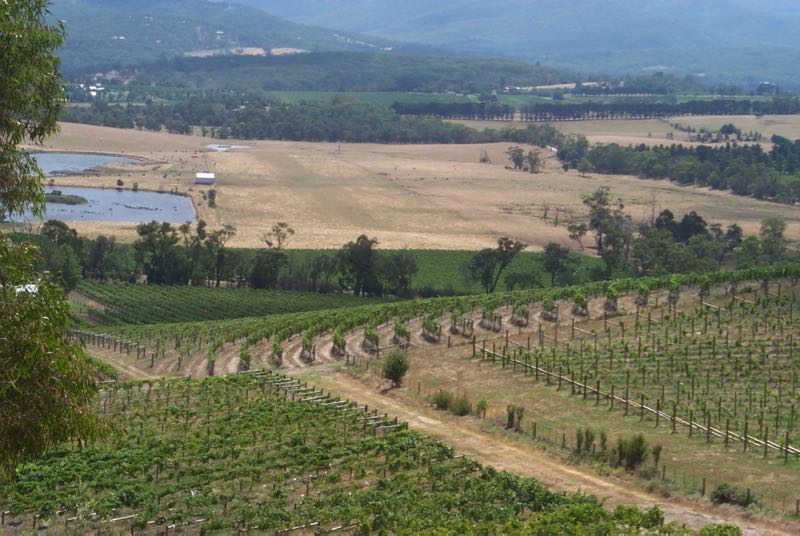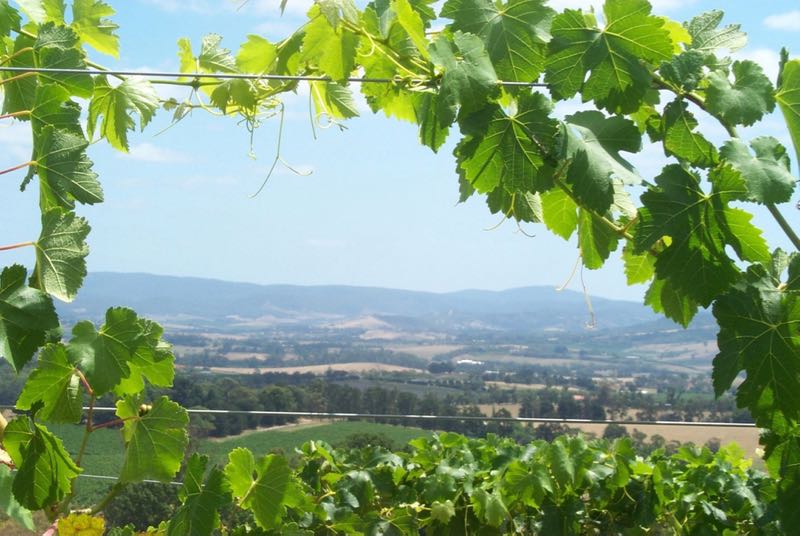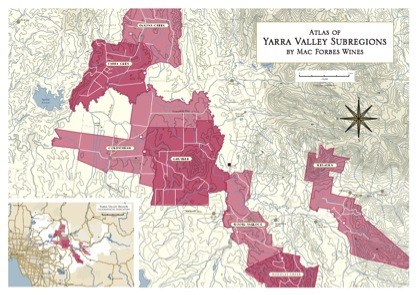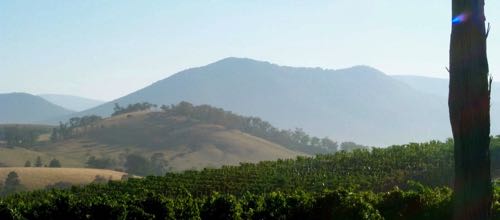While the first vines were planted in the late 1800’s, it was only in the late 1960’s that the Yarra Valley was revived as a wine region, the likes of Dr Bailey Carrodus, Dr John Middleton pioneered the second generation of wine growers.
The big push came in the 1990’s with the current crop of wine growers looking to emulate the success of Yarra Yering, Mount Marry and others.
It’s clear the dominant direction the Yarra Valley has gone is to Pinot and Chardonnay, with 70% of the vineyards planted to these two varieties.
Styles range all the way from traditional method sparklings, through Rosé, white and red table wines, all the way to vintage ports made from the classic Portugese varieties. We’re seeing a lot of interest in Rhône varieties, both white and red, and, Italian varieties.

The Growth of the Yarra
Coming back from the Northern Hemisphere vintage in Moldova in 1996 I was confronted by large swaths of new vine plantings in the Yarra Valley. Where there had been land used for grazing, growing vegetables and even unused swampland, there were now vines as far as the eye could see. In the mid-1990’s a vision for the Australian Wine Industry was set, the target date 2025. The plantings required to meet that vision were in the ground 25 years ahead of schedule in 1999.
Vignerons were trying to cram what had taken the Europeans 400 years to understand into 4. Trying to work out what varieties suited each site, optimising how they were managed in the vineyard, and then how to make the most of the fruit in the winery. The experiments were mostly limited to traditional French varieties, Chardonnay, Pinot Noir, Shiraz, Cabernet, Merlot, Malbec, Sauvignon Blanc. Sure modern technology and the benefit of hindsight, understanding how the “Old Wine World” had evolved, can help accelerate the process, but, not by 100 times. A vineyard experiment trialling varieties on sites considering any number of variables from planting density to row orientation takes decades, not days, and the cost to run each is considerable. This industry is truly a labour of love.
Young Vines – Supply & Demand
In the late 1990’s demand for Aussie wine was extreme. Grower’s held the power. Less future thinking growers cropped high and charged extreme prices for fruit. Yields of four, five and even six tonnes per acre were not uncommon amongst growers. Young vines being pumped with fertiliser and water weren’t producing optimal fruit. Extortion was often the name of the game for many short-sighted, money hungry growers, resulting in wineries looking to aggressively expand their own plantings.
Since then things have settled considerably. Many of the poorly run vineyards on bad sites have been ripped up. The good growers and producers who had always focused on balance and quality have had the chance to see the potential of mature, balanced vines with moderate yields and we’re all liking what we see!

Phylloxera
Over the last decade the devastating grapevine root aphid, phylloxera, a vine killer has been spreading across the Yarra Valley. Once a vineyard becomes infested the only option is to replant vines onto rootstocks resistant to the pest.
Sadly we are seeing many old vines being ripped up.
Fortunately, the replanting process is giving clever growers the opportunity to select quality vine materials, trial them with an array of rootstocks and apply the wealth of knowledge they have accumulated over the last couple of decades to accelerate the recovery.
Evolution of Style
I think it was in my second year at Yering Station that I hosted a renowned winemaker and Senior Show Judge, who asked me to describe typical Yarra Valley Pinot Noir. My answer: “You can’t, there’s too much diversity, the region is 50km square [By comparison the Côte de Nuits in France, home to the worlds finest Pinot Noir, is a strip of land about 30km in length, as narrow as 400m wide in places and itself broken down into different sub-regions and with those sub-regions different sites] the wines from the Upper Yarra are different from the wines of the Valley Floor, within, those areas there are different terroirs [sites] and vignerons are still working out how to best cultivate Pinot Noir or even if the site is suited to the Variety.” It seems so logical now. Putting it into perspective, this was before the days when Single Vineyard wines were common-place. Most of the world saw Australia as Barossa Shiraz and Coonawarra Cabernet if you were lucking, South East Australian Red Wine if you weren’t.
The late 90’s so the beginning of the Rosé revolution and the exponential growth of Pinot Noir and Chardonnay plantings.
In more recent years growers are trying an array of Italian, Portugese and other French Varieties. For decades Yarra Yering have had around 28 varieties.
Check out all the Yarra Valley Wines!
Top 5 Grape Varieties in 2017
Pinot Noir 35%
Chardonnay 34%
Shiraz 7%
Pinot Gris/Grigio 6%
Cabernet Sauvignon 6%
In general, it’s fair to say that no vintage is ever the same. Now it’s even getting hard to say, oh 2016 was like 2000. Influenced by changes to climate, vine maturity and generally lower yields, fruit is being picked weeks earlier than it was 20 years ago.
Trends overall have seen the decision to pick grapes at lower sugar levels and make wines of more elegance and restraint. We’ve seen market demand and maker desire pushing Chardonnay and Pinot hard to make exceptional wine. Shiraz or as many choose to call it Syrah to give a cool climate context, followed with experimentation with all facets of winemaking. I’d love to see this kind of effort go into Cabernet and blends too. How good are the Cabernets from Yarra Yering, Mount Mary and beyond!
The end result is an array of styles from diverse sites that are more exciting than ever before.
Yarra Sub-Regions
We’ve almost reversed the process of idenitfying sub-regions. Starting by naming single vineyards before defining sub-regions. I guess it makes sense, it’s a lot easier for a producer to simply identify their single vineyards than define the sub-regions of the Yarra Valley and then place the single vineyard within it.
We have seen a broader acceptance and break-down of the Valley Floor vs Upper Yarra, Warmer vs Cooler. Mac explains this in the video below.
It’ll be interesting to see how long it takes before a more definitive approach to breaking down the Yarra occurs.
It took until 2010, for Mac Forbes to propose a detailed Yarra Valley map, attempting to document possible sub-regions for the Yarra Valley, although many others had thought it. This doesn’t even begin to break down sub-regions into specific sites by quality and suitability for specific varieties. Matching varieties to sites in Australia, the potential of non-traditional ie not French, for me Italian Varieties, is a huge subject that will have to wait for another time. You can subscribe to my blog to stay in the loop.

Mac Forbes first cut at defining Sub-Region for the Yarra Valley
In the video below Mac takes us on a flyover of his vineyards across the various sub-regions of the Yarra Valley. You’ll see just how big it is compared to some of the regions we’ve explored in Burgundy. Beyond the sheer size of the Yarra Valley, there a massive geological structures, think mountain ranges and the Port Phillip Bay that shield some areas and expose others. Elevation can range from 50-1000m. Considering the temperature drops 1ºC for every 100m increase, elevation alone can have a dramatic impact!

You must be logged in to post a comment.